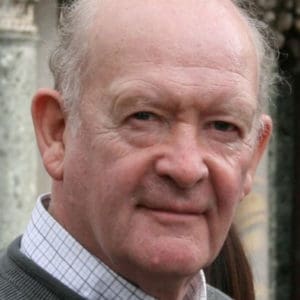Editor’s Note: David Torkington continues his series with a segue into the history of Christian Mystical Tradition, looking now at the tragic dearth of mystical writings and theology in the Church. To read part 35, see here. To begin with part 1, see here.
A Brief History of Christian Mystical Spirituality, Continued
Before going to the Franciscan novitiate to try my vocation, I went on a grand tour of the Swiss Alps instead of giving all my money to the poor, like St. Francis. It was there, beneath the grandeur of the vast mountain ranges, that I felt for the first time just how small and insignificant I was. By the time I entered the novitiate I had already discovered what would alone teach me humility: the experience of something, or rather, of Someone whose greatness and grandeur would lead me into the only humility that would become the prelude to all the other virtues.
Unfortunately, although the library was full of moral and ascetical masterpieces, I could not find a single book that taught the reader how to pray in such a way that it would lead to the contemplation of God’s greatness, his grandeur and the glory into which we are all called as our spiritual birthright. And I could only find such books with difficulty in the far larger library at East Bergholt in Suffolk where I went to study Philosophy and Theology.
Where Have All the Mystical Writers Gone?
Between St. Bernard and St. John of the Cross, such books abounded, but between the condemnation of Quietism and the present day, such books have become extremely rare—if they exist at all. Books written in simple modern English by a practitioner could not be found, at least not by me, any more than it was possible to find a spiritual director who knew, from experience and not just from books, the journey through the mystic way.
There have been many books on ‘mysticism’. It seems intellectuals and academics are fascinated by the subject, but if these books are not positively unsound, they are of little help and even a hindrance to those looking for practical help. This is because they have not been written by practitioners.
One such work which I have used is generally accepted as a classic of its kind: Western Mysticism by Dom Cuthbert Butler, which draws together, in an orderly way, texts from the great Western Mystics. But, because it is not written by a practitioner, it can muddle and mislead a reader who is looking for practical guidance. Dom Cuthbert Butler has the humility to admit that he is not a practitioner whereas others do not, and so the reader is put on their guard. In his Epilogue he writes:
‘To prevent misconceptions, I say quite simply that I have never had any mystical experiences myself, never had anything that could have been called an experimental perception of God or his presence. The first four Mansions of St. Teresa’s Interior Castle will always be of practical use to those endeavoring to lead a spiritual life, but the last three Mansions along with the latest and the most mystical treatises of St John of the Cross, and a host of other such writings, would have to be classed in our libraries as outworn ideas of a bygone age, or at best as religious poetry.’
If he had only said all this at the beginning of his book instead of in his Epilogue, readers would read with their spiritual antennae alert and at the ready, enabling them to learn from his scholarly work which gathers together the copious quotations from the great mystics while yet remaining skeptical about his often erroneous interpretations.
The introduction to the unique masterpiece on mystical prayer, The Graces of Interior Prayer by Père Poulain SJ, makes it clear that the author is not a practitioner either, although his scrupulous research has produced perhaps the greatest and most accurate piece of research into mystical theology ever written. The truth of the matter is, as Poulain’s brief autobiographical list of mystical writers since Quietism shows, there have predominantly been non-practitioners trying to write about what was still seen as an extraordinary way for a few ‘holy souls’. That the way back to God was through contemplation in, with, and through, Christ was forgotten. There were meditation manuals of all sorts, but no manuals teaching ordinary Catholics how to enter into Christ’s contemplation of his Father through traveling along the mystic way.
The Balance Between the Heart and the Mind
I first studied Thomistic Theology before I was introduced to what was called the ‘New Theology’. I was able to compare the two and understand the theology that was taught in universities and seminaries since the Council of Trent as the theology used by that Council to express its teaching. Although this was the theology that was used by most educational establishments in the years immediately after the Council of Trent, as Monsignor Ronald Knox has established, it was taught when mystical theology was taught and practiced like never before.
During this period then, when through this teaching, the primacy of love was still paramount, there was a perfect balance between the heart and the mind, between the intellect and the will. As the famous Dominican, Reginald Garrigou Lagrange OP, shows in his masterwork, The Three Ages of the Interior Life, St Thomas Aquinas wrote his brilliant Summa Theologica while he was himself traveling in the Mystic Way. Those, therefore, traveling in this Way will be able to see and appreciate this work as it should be understood.
How to Read the Summa with the Heart and Mind
St. Augustine, St. Gregory the Great and St. Bernard were the first to emphasize how it is in contemplation that a person sees the truth ever more clearly as they progress toward the summit of the Mystic Way. Once again I use the metaphor that I used then. With contemplation, a student is able to see and understand more keenly and more deeply than without it the magnificent masterwork that was St. Thomas Aquinas’ gift to the Church. Without contemplation, it is seen as a great stained glass window, but from the outside. With contemplation, his masterwork is seen, as if from the inside, iridescent with all the brilliance with which he was able to write, thanks to the Holy Spirit who guided his every word and his every sentence.
Aided and Abetted by the Enlightenment
The primacy of love would now begin to wane as the primacy of the intellect was seen as paramount in the new ‘Age of Enlightenment’. The decline of the heart and of the will in Catholic theology in general and in Catholic spirituality in particular almost exactly coincided with the decline of mystical theology, if it did not also contribute to it. The emphasis on the intellect and on reason as the sole arbiters of what was and was not acceptable seeped into ecclesiastical thinking too. It put the final nails into the coffin of a mystical theology and mystical experiences that could not be put under the microscope of rational thought and intellectual deduction.
Henceforth, any attempt at renewal in the Church was almost always purely intellectual, usually by vigorously promoting new initiatives to reinstate and re-emphasize the theology of St. Thomas Aquinas into all institutes of learning. This state of affairs continued until the beginnings of what came to be called the ‘New Biblical Theology’ that enabled the Second Vatican Council to take place. This New Biblical Theology certainly touched hearts, as well as minds and raised hopes. It was, in fact, the very ancient theology that prevailed at the dawn of Christianity but reinterpreted and re-presented thanks to the modern biblical, liturgical and historical research that inspired the Second Vatican Council. The sadness was that because the great theologians, scripture scholars, liturgists and historians who promoted this New Theology were influenced by the anti-mystical ethos that has prevailed for the last four hundred years. They were ignorant therefore of mystical prayer and of the vital prayer life that leads up to and into it.
A Regrettable Blind Spot
This created in them all a blind spot that prevented them from seeing in their otherwise laudable studies the absolute importance of the profound mystical theology that prevailed in the early Church. Both the old scholastic and the new biblical theology then were to suffer from both the ignorance of and therefore the failure to practice the mystical theology and the God-given spirituality that I have tried to explain. Sadly therefore, although many genuine attempts have been made to renew the Church in the three hundred years or more since the condemnation of Quietism, what the spiritual theologian Louis Cognet describes as ‘devout humanism’ continues to be the staple diet of Catholic spirituality, although, as we are about to see, even this spirituality is under threat as a new feral liberalism threatens to take over.
Vocal Prayer Depends for its Power on the Prayer of the Heart
However. it is untrue to give the impression that the years following the condemnation of Quietism were spiritually dead. Prayers were said, the Office was recited, the Liturgy was celebrated, but vocal prayer depends on the prayer of the heart. In other words, vocal prayer depends for its power and efficacy on the love that is generated in prayer within the heart of a believer. By vocal prayer, I mean the whole of the Liturgy. It is this love that determines the quality of our relationship with God before we even go into Church, never mind open our mouths. So that this truth would never be forgotten by his brothers, St. Bernadine of Siena had these words written in gold around the choir where the liturgy was recited in the little hermitage of Fonte Columbo in Italy.
‘Si cor non orat in vanum lingua laborat. ‘If the heart does not pray then the tongue labors in vain’.
Image credit: Pixabay




